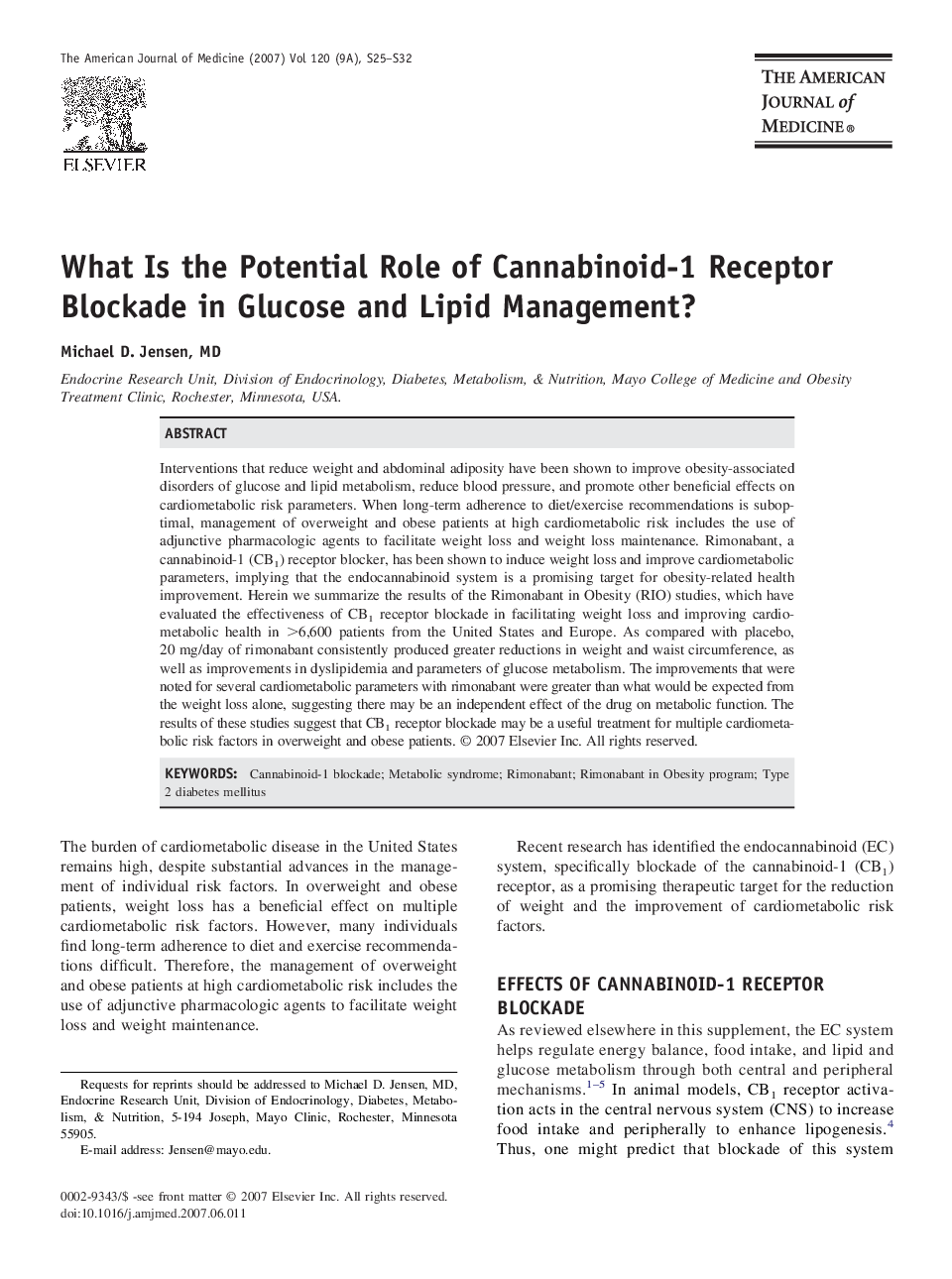| کد مقاله | کد نشریه | سال انتشار | مقاله انگلیسی | نسخه تمام متن |
|---|---|---|---|---|
| 2726033 | 1566255 | 2007 | 7 صفحه PDF | دانلود رایگان |
عنوان انگلیسی مقاله ISI
What Is the Potential Role of Cannabinoid-1 Receptor Blockade in Glucose and Lipid Management?
دانلود مقاله + سفارش ترجمه
دانلود مقاله ISI انگلیسی
رایگان برای ایرانیان
کلمات کلیدی
موضوعات مرتبط
علوم پزشکی و سلامت
پزشکی و دندانپزشکی
پزشکی و دندانپزشکی (عمومی)
پیش نمایش صفحه اول مقاله

چکیده انگلیسی
Interventions that reduce weight and abdominal adiposity have been shown to improve obesity-associated disorders of glucose and lipid metabolism, reduce blood pressure, and promote other beneficial effects on cardiometabolic risk parameters. When long-term adherence to diet/exercise recommendations is suboptimal, management of overweight and obese patients at high cardiometabolic risk includes the use of adjunctive pharmacologic agents to facilitate weight loss and weight loss maintenance. Rimonabant, a cannabinoid-1 (CB1) receptor blocker, has been shown to induce weight loss and improve cardiometabolic parameters, implying that the endocannabinoid system is a promising target for obesity-related health improvement. Herein we summarize the results of the Rimonabant in Obesity (RIO) studies, which have evaluated the effectiveness of CB1 receptor blockade in facilitating weight loss and improving cardiometabolic health in >6,600 patients from the United States and Europe. As compared with placebo, 20 mg/day of rimonabant consistently produced greater reductions in weight and waist circumference, as well as improvements in dyslipidemia and parameters of glucose metabolism. The improvements that were noted for several cardiometabolic parameters with rimonabant were greater than what would be expected from the weight loss alone, suggesting there may be an independent effect of the drug on metabolic function. The results of these studies suggest that CB1 receptor blockade may be a useful treatment for multiple cardiometabolic risk factors in overweight and obese patients.
ناشر
Database: Elsevier - ScienceDirect (ساینس دایرکت)
Journal: The American Journal of Medicine - Volume 120, Issue 9, Supplement 1, September 2007, Pages S25-S31
Journal: The American Journal of Medicine - Volume 120, Issue 9, Supplement 1, September 2007, Pages S25-S31
نویسندگان
Michael D. MD,